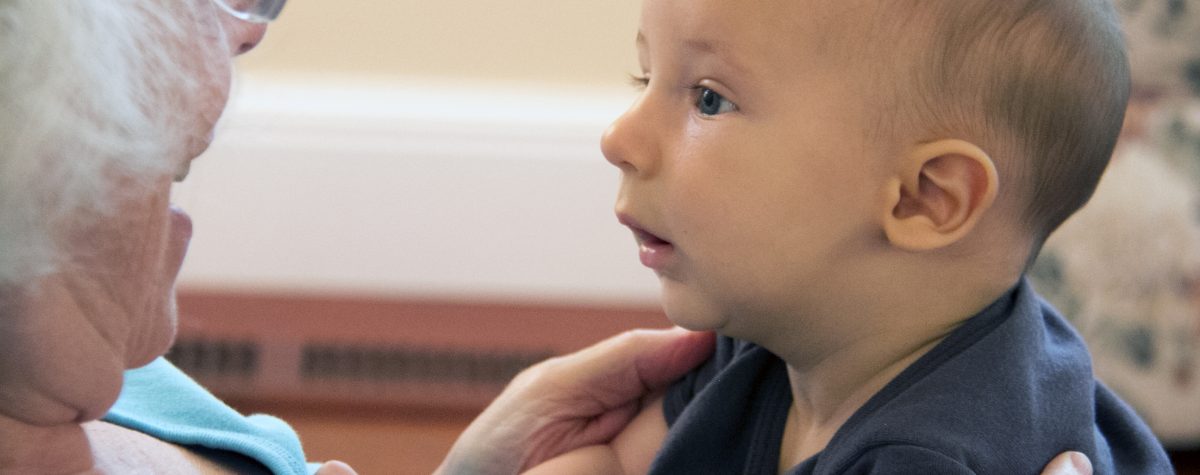
© Bonnie Bainbridge Cohen
“It’s great if you’re willing to fall because then it means you’re fluid. We learn to balance by falling, not by being stiff. Babies that are held all the time or in seats, they don’t learn how to fall because they’re just learning postures, unless they’re held in a moving way.”
– Bonnie Bainbridge Cohen
COMMUNITY QUESTION
What does “held in a moving way” look like, please?
BONNIE
The question, “What does it look like to hold a baby in a moving way?” is a powerful question. Describing it in words without a baby and without movement is an interesting challenge.
Here are some explorations I can offer that may help to clarify your experience of what it means to hold in a moving way.
- You want to pick up a baby, even a newborn baby. Instead of simply picking the baby up, you can:
- First speak to the baby – tell them you are going to pick them up.
- When you have their attention and eye contact, beginning gently lifting their head, roll them toward the side facing you (as they will eventually do themselves, because babies can’t do sit ups for several years) and bring them up into your embrace.
- Laying a baby down is similar:
- Tell them you are going to lay them down.
- Lower them sideways so they can see where they are going (and not simply falling backward into the unknown) with their head the last body part to touch the surface. As much as possible, follow the pathway they will eventually do themselves.
- If the baby is older, they will also show a preference by where their attention is. For example, if they are looking toward the right, pick them up from the right, not the left. On the other hand, if the baby is always coming up from the right, entice them to turn to the left and sequence their movement from their perspective.
- When carrying a baby, you usually do so based on our preference and movement habits. Notice how this limits the baby’s experience, and challenge yourself to expand your own movement repertoire.
- Dancing around while holding a baby can be fun for both of you.
- Laying on the floor on your back (your head lifted on a pillow(s). Place the baby on their belly on your tummy or chest (depending on your size and the size of the baby). This is great “tummy time”.
- Baby can learn to lift their head and communicate with you face to face.
- Gradually, you can slowly roll all the way to each side so baby rolls onto their back on each side.
These are a few fun and safe ways for baby to experience falling.
A major principle is to explore, yourself, how you would naturally accomplish a movement that you wanted to do. Then provide the support for the baby to accomplish it as though they were initiating it themselves.